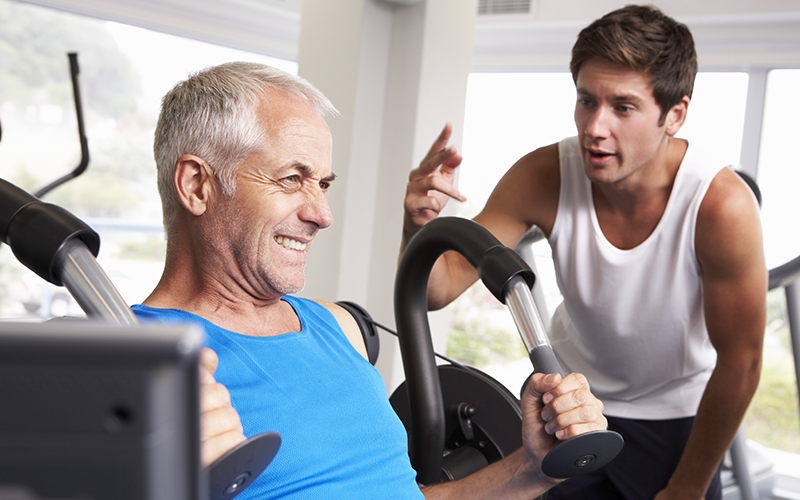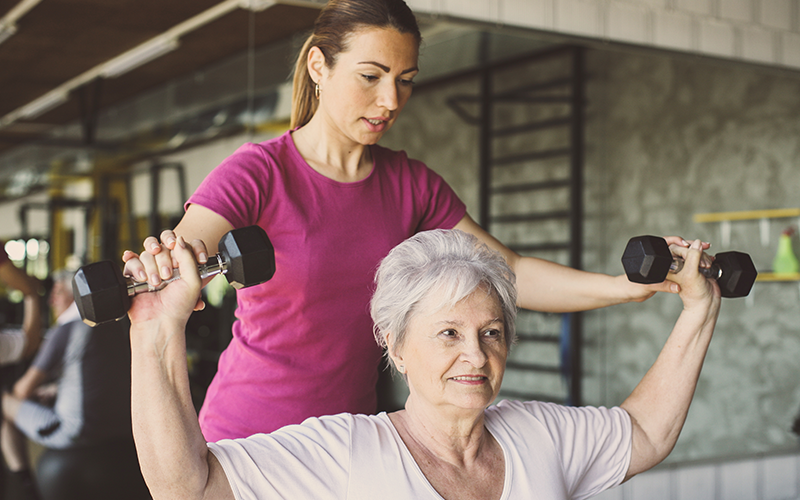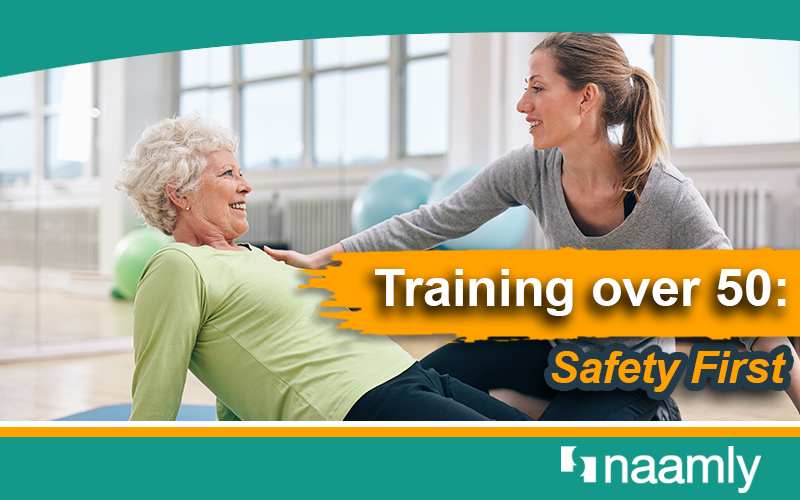There’s a segment of the population that most gym owners ignore or don’t really spend much time and effort attracting: the over-50 population.
Training over 50 is important to a rapidly growing segment of the population, with more and more people joining the demographic every day.
It’s not just Baby Boomers and older people anymore. Training over 50 is welcoming Gen X’ers now, too. The segment will continue to grow for decades as people continue to live longer and to spend more time and money on their health and wellbeing.
If training over 50 isn’t a part of your business plan, then you’re missing out on a tremendous economic opportunity. A lot of gym owners don’t know much about “older” people or how to provide training over 50.

Simply put, there are some differences you need to be aware for someone training over 50 compared to, say, training at 20. Safety is a consideration but not an insurmountable one. This blog post will walk you through how to approach this to help you grow your business with the largely overlooked demographic.
Bodies Are Changing
As people age, we naturally experience a decline in muscle mass and bone density. This process, known as sarcopenia, can begin as early as the 30s but becomes more pronounced after 50 – unless people strength train to prevent it. In contrast, a 20-year-old is likely at or near their peak physical condition, with maximum muscle mass and bone strength.
Older clients may also have more wear and tear on their joints, including arthritis or previous injuries. Some exercises that are routine for a younger person might pose a risk of injury for someone older; trainers need to know a have modifications available for these clients.
Mature clients might not be as aware of the benefits of physical exercise as they age, particularly strength training. So, educate them about sarcopenia, bone density, falls prevention, and more.

Fitness didn’t become a part of our broader culture until the early 1980s, so schoolkids weren’t educated about it like more recent generations. “Muscles” just meant bodybuilding competitors on TV. You need to show how it relates to functional fitness and longevity.
Don’t do it in a bogey-man fashion. Present your services as a positive way to remain active and independent to enjoy life on their own terms for as long as possible.
Women go through menopause in midlife, bringing on myriad physical changes in their bodies that affect the rest of their lives. Men find it harder to lose that spare tire around the middle.
You have a wide range of ways to help them with these common concerns.
And you need to show them that you understand their changing lifestyles, as well.
Many are approaching retirement or have already cut back on working. They have more time and, generally, more money to spend on fitness and on upgrades like private training.
And they are more determined than previous generations to extend healthy, meaningful life for as long as possible.
Understand the Motivation
A traditional fitness client in his or her 20s might want to join your gym to get bigger muscles or a firmer physique.

And while active adults who are training over 50 certainly enjoy looking good, too, their motivations are more complex than just being beach-body ready. Training over 50 can be relevant for them regarding:
· Travel
· Playing with grandkids
· Avoiding chronic health issues like type 2 diabetes and high blood pressure
· Sleeping better
· Improving their mood
· Enjoying sports (golf, tennis, pickleball) and hobbies (dancing, hiking, gardening)
Address these topics in your marketing. And educate mature prospects about why they will benefit from working out with you:
· Avoiding falls
· Protecting their brains from cognitive decline and dementia
· Better heart health, including circulation and lower risk of heart disease and stroke
· Increased muscle mass and strength, necessary for ordinary daily function and more
· Better bone density for fewer fractures
· Help with managing their weight
· Longer independence
· Less back pain, body aches, and discomfort
Before the Work Starts
Don’t assume that all people over 50 are the same. They are not.
Some are experienced athletes in excellent health. Many more are very deconditioned after decades of working and raising families. Obesity is a problem, as it is for the broader population.
And, of course, a 50-year-old body is very different from, say, a 75-year-old body.
So, get to know prospects and clients. Learn their health and injury history. Advise them to talk with their health-care providers before starting an exercise regimen. And arm yourself with comebacks if prospects tell you they’re afraid of hurting themselves or – worse – “getting bulky.”
Know the myths and be ready for them.

Assess each new client. Learn about their goals, motivators, and fears.
· Does Steve want to look better for his daughter’s wedding next year?
· Does Phyllis want to enjoy working in the garden without hurting her back?
· Or maybe Bob wants to gain 10 yards back on his golf drive.
It’s important to set realistic goals based on the client’s current state. Focus on today and the future, not the condition they might’ve been in decades ago.
Functional fitness is a great way to make exercise relevant to mature clients. It involves training that replicates actions they take throughout ordinary life – like putting away groceries, carrying grandchildren, and enjoying their sports and hobbies.
The focus is on enjoying life through strength, agility and endurance. That leads to less risk of injury and greater confidence in life.
Small group training over 50 is popular with many mature adults. It gives them a trainer’s attention along with other people who will hold them accountable. And the friendships that develop can be good for overall wellbeing, too.
Training over 50 should involve a range of activities, including strength training, aerobic work, and coordination/balance exercises.
Create programming that can be easily adapted for clients who have had injuries or joint replacements. This doesn’t necessarily mean you let them skate through a light version of your workout. It means you give them the confidence to get the most out of the exercise.
Again, you’ll need to have some tricks in your bag, like plenty of understanding of these common injuries and surgeries – and modifications that really get the job done.
Keep it fun, safe, and effective for everyone involved. It might take extra effort or planning on your part, but not so much to discourage you from learning and providing the expertise.
Groups such as the Functional Aging Institute offer specialized certifications for training over 50.
FAI says it “is dedicated to becoming the ‘go-to” source for training mature clients by providing fitness professionals with the most current, up-to-date and forward-thinking techniques and strategies.”
Alloy Personal Training focuses on people over 40 and is opening franchise locations across the country. It offers a premium service to a segment of the population that is more than happy to pay a premium service for it.
Conclusion
Training over 50 will continue to be a growth opportunity in fitness. The demographics are conclusive and represent an opportunity for gyms that want to serve this segment of the population.
Learn about functional training and other issues relevant to mature adults. Network with local healthcare and service providers. And remember that being “older” is not necessarily a defining characteristic.

Training over 50 can be a powerful way to help people enjoy this stage of their life with the confidence that fitness can bring.
Do you want to learn more about growing your business? Get our free “51 Ways to Acquire Clients Without Facebook Ads.”

